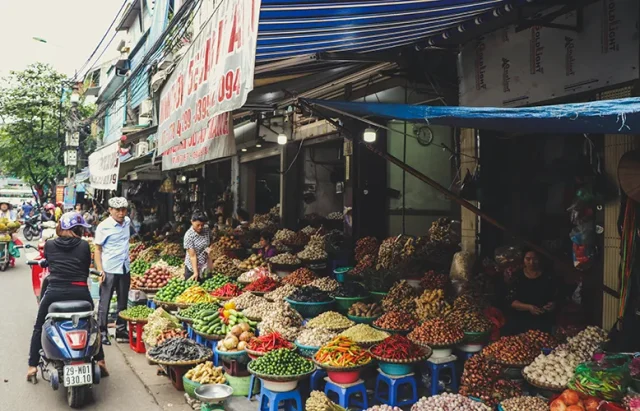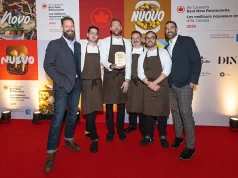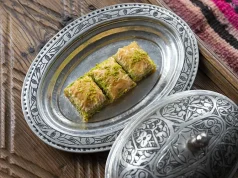
Are you ready to explore Vietnam’s authentic essence?
The hidden heart of Vietnam exists not in upscale dining establishments or popular tourist destinations. The heart of Vietnamese culture beats on the streets as steaming pots and sizzling woks alongside vibrant food carts form an irresistible sensory paradise.
Eating Vietnamese street food offers an experience that goes beyond mere sustenance. Vietnamese culinary traditions transform into a multisensory cultural exploration when served in banana leaf wraps, tiny bowls and consumed from little plastic stools. Fresh herbs and complex flavors combined with affordable prices create an unparalleled culinary experience in this world-class destination.
First-time visitors often feel overwhelmed by Vietnam’s street food scene which contains thousands of vendors each offering distinctive regional specialties. Most tourists repeatedly choose familiar options which stops them from discovering incredible hidden culinary gems.
This guide serves as your complete handbook for Vietnamese street food which includes essential information about top dishes to try along with important eating etiquette and advice on locating the best food vendors for safety and flavor.
Your Street Food Journey Map:
- Why Vietnamese Street Food Is Worth Exploring
- Regional Food Differences Across Vietnam
- Must-Try Street Foods In Northern Vietnam
- Essential Street Eats In Central Vietnam
- Southern Vietnamese Street Food Specialties
- Street Food Safety Tips
- Finding The Best Food Streets And Markets
Why Vietnamese Street Food Is Worth Exploring
Vietnamese street food serves as a unique showcase for the nation’s deep cultural traditions and everyday lifestyle. When planning your trip, consider booking the best custom tour for Vietnam to ensure you hit all the culinary hotspots while experiencing the country’s beautiful landscapes and vibrant cities.
Three main reasons make Vietnamese street food a top travel priority for your bucket list.
Incredible Value For Money
A standout feature of Vietnamese street food is its remarkable affordability. At just $1-3 USD you can savor a substantial meal which compares to meals priced ten times higher in your home country. The affordable prices allow you to try many dishes daily without exceeding your travel budget.
Think about it:
- A steaming bowl of phở: $1.50
- Bánh mì sandwich: $1.00
- Fresh spring rolls: $2.00
- Iced Vietnamese coffee: $0.75
Major tourist destinations offer these affordable prices when you find the right spots. The reasonable prices allow you to try numerous Vietnamese dishes throughout your trip which enables you to experience the full range of Vietnamese culinary flavors.
Freshness And Quality
Vietnamese street food culture revolves around freshness. Street vendors typically only prepare one or two dishes which they have mastered over many years. Vendors purchase fresh ingredients each morning and cook your meal in front of you after preparing everything manually.
Their focus on freshness results in unique flavor combinations that mass restaurants cannot duplicate. Ordering bún chả in Hanoi means you’ll receive herbs picked that same morning along with freshly made noodles and pork grilled over charcoal just before serving.
Cultural Immersion
The act of eating street food extends beyond the meal to include a unique cultural experience. Sitting on a small plastic stool while sharing space elbow-to-elbow with locals makes you take part in a fundamental Vietnamese everyday ritual.
You’ll witness:
- Families gathering after work
- Business deals being made over steaming bowls
- Friends catching up over iced coffee
- The morning routines of locals take place around food stalls and markets.
You can’t experience such authentic cultural immersion through museums or guided tours. The true essence of Vietnamese life unfolds at street food stalls where you’re welcome to join in.
Regional Food Differences Across Vietnam
As you journey from north to south throughout Vietnam you will witness dramatic changes in its culinary offerings due to regional differences in climate history and cultural influences.
Northern Cuisine (Hanoi Region)
Northern Vietnamese dishes display subtle flavors and reduced spiciness due to significant Chinese cultural influence. The cool climate of Northern Vietnam has produced a restrained culinary style that emphasizes preserving natural ingredient flavors.
Central Cuisine (Hue and Da Nang Regions)
The central region offers spicier foods which feature complex preparations along with royal influences from Hue. Central Vietnamese dishes are characteristically vibrant in presentation and contain strong chili heat.
Southern Cuisine (Ho Chi Minh City/Saigon Region)
Southern Vietnamese food stands out with its sweet flavors and plentiful fresh herbs while drawing culinary influences from both Cambodia and Thailand. The Mekong Delta’s tropical richness creates the hallmark freshness and sweetness found in southern Vietnamese cuisine.
Must-Try Street Foods In Northern Vietnam
Hanoi stands as the undisputed street food capital of Vietnam in the northern region. These essential dishes represent what you should taste during your visit.
Phở Bò (Beef Noodle Soup)
Although phở can be found in every part of Vietnam now, its roots trace back to northern Vietnam where it developed its unique flavor profile. Northern phở stands out with its clear beef broth, broad rice noodles, and minimal herbs because it emphasizes broth perfection.
Bún Chả (Grilled Pork with Rice Noodles)
The Hanoi specialty dish includes charcoal-grilled pork patties served with thin rice noodles and a sweet-sour dipping sauce complemented by fresh herbs. The smoky scent of grilled pork helps people recognize bún chả stands which serve this lunchtime meal.
Essential Street Eats In Central Vietnam
The past imperial court in Hue influenced Central Vietnam’s cuisine which produces more complex and spicier dishes.
Bánh Xèo (Sizzling Pancakes)
Rice flour and turmeric create these crispy savory pancakes which contain pork, shrimp and bean sprouts and then they are wrapped with herbs in rice paper for serving.
Cao Lầu (Hoi An Noodles)
The Hoi An specialty consists of thick chewy rice noodles served with slices of char siu pork along with fresh herbs and minimal broth finished with crunchy rice crackers on top.
Southern Vietnamese Street Food Specialties
Southern Vietnamese dishes stand out for their sweet tastes and generous use of fresh herbs.
Bánh Mì (Vietnamese Sandwich)
A crispy French baguette serves as the bread base for southern bánh mì which contains pâté together with diverse fillings and pickled vegetables plus fresh herbs. Bánh mì stands out as the Vietnamese dish with the highest international recognition according to recent food tourism surveys.
Cơm Tấm (Broken Rice)
The meal consists of unique textured broken rice served alongside a grilled pork chop, fried egg, pickled vegetables and fish sauce dressing.
Street Food Safety Tips
Vietnamese street food is generally safe but taking smart precautions will help guarantee an enjoyable culinary experience.
Choose Busy Stalls
The safest dining decision travelers can make is to eat at restaurants where locals eat. Stalls with a heavy customer flow maintain high food turnover rates while having a history of keeping diners healthy and using premium ingredients.
Watch For Clean Practices
Choose vendors who store raw and cooked foods separately while ensuring cash handling personnel do not touch food and use purified water for cooking and dishwashing purposes.
Recent statistics show that food safety incidents among tourists have declined by 37% since 2019, but it’s still worth being careful.
Your Vietnam Food Journey Begins
Vietnamese street food provides diners with a remarkable fusion of vibrant tastes alongside fresh ingredients and cultural experiences. If you sit at plastic stools and learn local phrases while following residents to their favorite food stalls you’ll see Vietnam through eyes no typical tourist gets to.
Street food represents the essence of Vietnamese culinary tradition while offering you a chance to participate in authentic Vietnamese life beyond being just a low-cost meal choice.
So forget the tourist trap restaurants. You’ll discover the authentic Vietnam through street-side dining experiences as you enjoy steaming bowls and crispy bánh mì.





